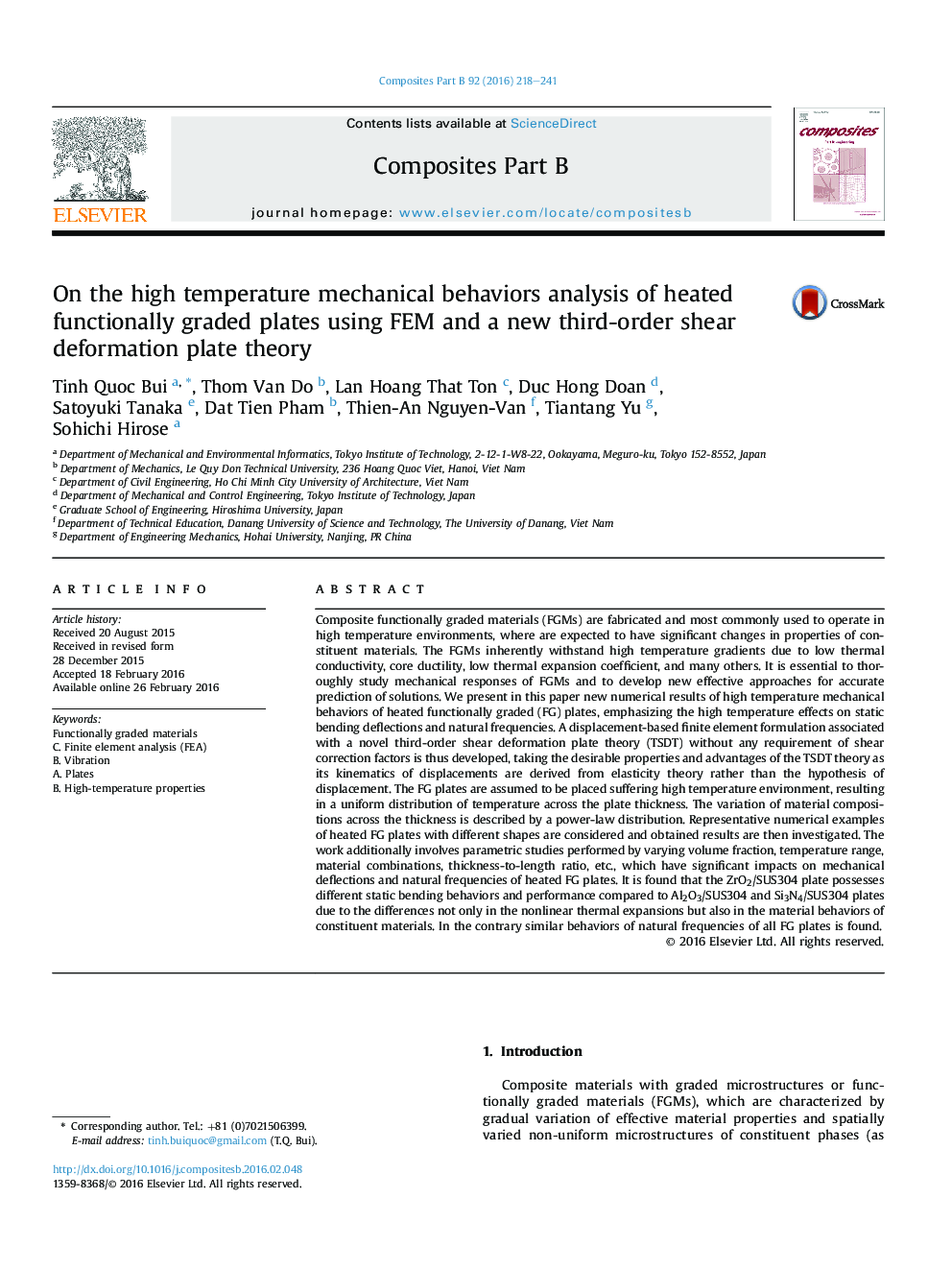| Article ID | Journal | Published Year | Pages | File Type |
|---|---|---|---|---|
| 816892 | Composites Part B: Engineering | 2016 | 24 Pages |
•New numerical results of mechanical behaviors of FG plates in high temperature are presented.•A finite element model based on a new third-order shear deformation plate theory is developed.•Not all FGMs possess similar mechanical behaviors and performance in high temperature.•Similar behavior of natural frequencies in high temperature of FGMs is found.•Material combinations of FGMs play a key role and significantly affect the mechanical behaviors of plates.
Composite functionally graded materials (FGMs) are fabricated and most commonly used to operate in high temperature environments, where are expected to have significant changes in properties of constituent materials. The FGMs inherently withstand high temperature gradients due to low thermal conductivity, core ductility, low thermal expansion coefficient, and many others. It is essential to thoroughly study mechanical responses of FGMs and to develop new effective approaches for accurate prediction of solutions. We present in this paper new numerical results of high temperature mechanical behaviors of heated functionally graded (FG) plates, emphasizing the high temperature effects on static bending deflections and natural frequencies. A displacement-based finite element formulation associated with a novel third-order shear deformation plate theory (TSDT) without any requirement of shear correction factors is thus developed, taking the desirable properties and advantages of the TSDT theory as its kinematics of displacements are derived from elasticity theory rather than the hypothesis of displacement. The FG plates are assumed to be placed suffering high temperature environment, resulting in a uniform distribution of temperature across the plate thickness. The variation of material compositions across the thickness is described by a power-law distribution. Representative numerical examples of heated FG plates with different shapes are considered and obtained results are then investigated. The work additionally involves parametric studies performed by varying volume fraction, temperature range, material combinations, thickness-to-length ratio, etc., which have significant impacts on mechanical deflections and natural frequencies of heated FG plates. It is found that the ZrO2/SUS304 plate possesses different static bending behaviors and performance compared to Al2O3/SUS304 and Si3N4/SUS304 plates due to the differences not only in the nonlinear thermal expansions but also in the material behaviors of constituent materials. In the contrary similar behaviors of natural frequencies of all FG plates is found.
